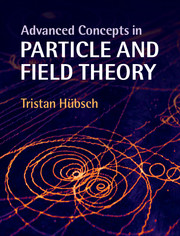Book contents
- Frontmatter
- Epigraph
- Contents
- Preface
- I Preliminaries
- II The Standard Model
- 3 Physics in spacetime
- 4 The quark model: combinatorics and groups
- 5 Gauge symmetries and interactions
- 6 Non-abelian gauge symmetries and interactions
- 7 The Standard Model
- III Beyond the Standard Model
- IV Appendices
- A Groups: structure and notation
- B A lexicon
- C A few more details
- References
- Index
3 - Physics in spacetime
from II - The Standard Model
- Frontmatter
- Epigraph
- Contents
- Preface
- I Preliminaries
- II The Standard Model
- 3 Physics in spacetime
- 4 The quark model: combinatorics and groups
- 5 Gauge symmetries and interactions
- 6 Non-abelian gauge symmetries and interactions
- 7 The Standard Model
- III Beyond the Standard Model
- IV Appendices
- A Groups: structure and notation
- B A lexicon
- C A few more details
- References
- Index
Summary
High-energy collisions, scatterings and most decays are, for the most part, relativistic quantum processes. It is therefore imperative to recall relativistic kinematics and the basic rules of tensor calculus; see Appendix B.2 for a more complete introduction. However, this chapter neither replaces nor competes with complete treatments of the special theory of relativity such as the illustrative but perfectly detailed text [512] or the first and original text [566]. Instead, the purpose of this chapter is to provide an introduction and the results that will be useful in following the subsequent material.
3.1 The Lorentz transformations and tensors
When describing physical processes, one necessarily uses a mathematical apparatus such as a (reference) coordinate system – equipped with a specific and appropriate collection of coordinates. The choice of any one such coordinate system is arbitrary and should not affect the characteristics of the natural laws.
The basic idea (oft cited as one of the two postulates) of Einstein's theory of relativity is that the change in the choice of the coordinate system and corresponding coordinates used to describe spacetime must not change the meaning of natural laws – and so must not have any measurable, i.e., observable consequences.
Digression 3.1 Chapter 5 will show that the so-called gauge principle is simply the generalization of this relativity to the spaces of so-called internal degrees of freedom (also a type of coordinates), such as the phase of the complex wave-function of any charged particle.
In the special theory of relativity, this idea of relativity is limited to so-called inertial (coordinate) systems, which are usually defined as coordinate systems that differ from each other only in moving one with respect to the other with a constant relative velocity. However, against all intentions, this “definition” does not exclude, for example, a pair of coordinate systems that co-rotate about the same axis with the same angular velocity, but move with a constant relative velocity along the co-rotating axis.
- Type
- Chapter
- Information
- Advanced Concepts in Particle and Field Theory , pp. 83 - 126Publisher: Cambridge University PressPrint publication year: 2015

